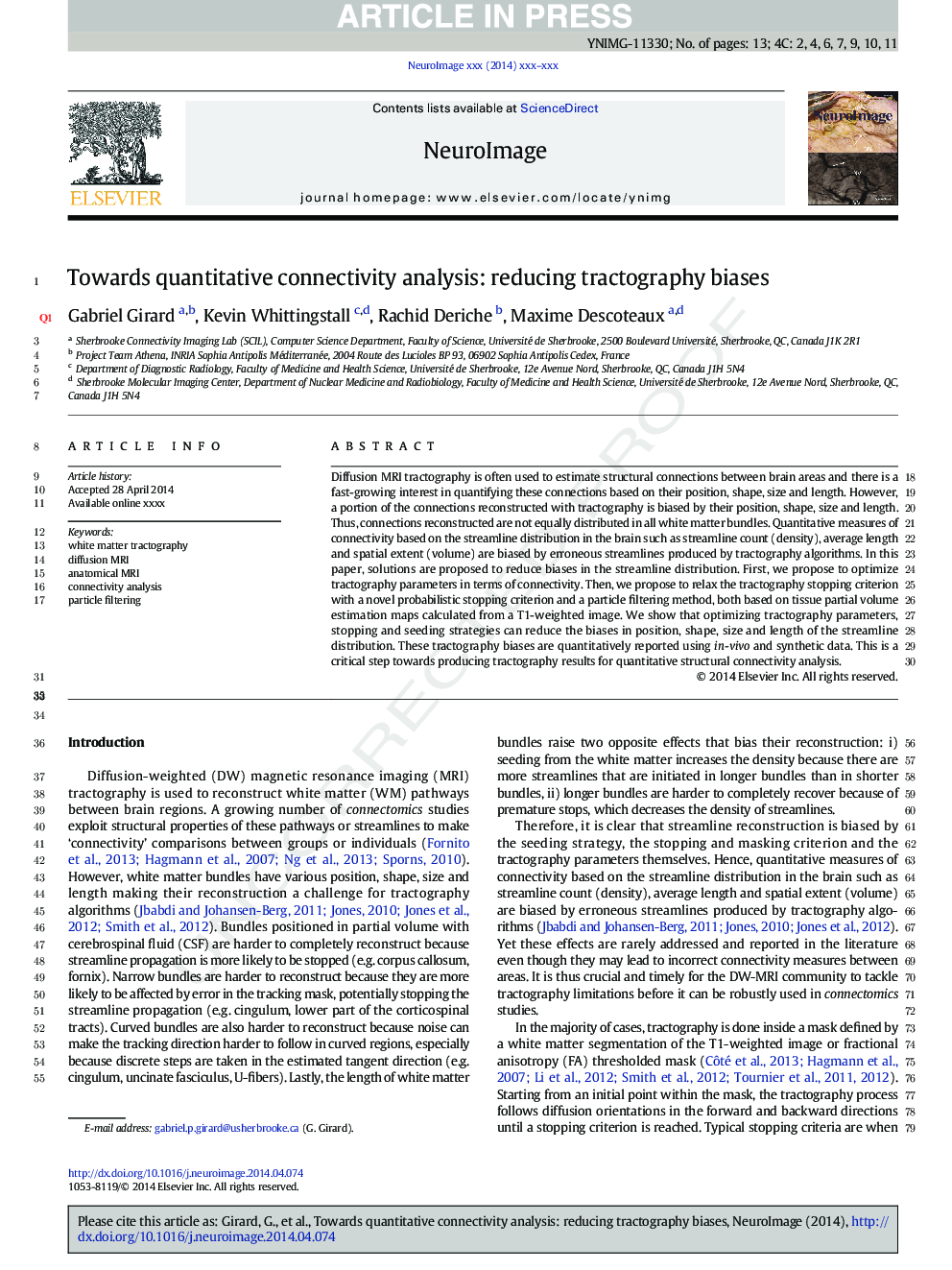| Article ID | Journal | Published Year | Pages | File Type |
|---|---|---|---|---|
| 6026944 | NeuroImage | 2014 | 13 Pages |
Abstract
Diffusion MRI tractography is often used to estimate structural connections between brain areas and there is a fast-growing interest in quantifying these connections based on their position, shape, size and length. However, a portion of the connections reconstructed with tractography is biased by their position, shape, size and length. Thus, connections reconstructed are not equally distributed in all white matter bundles. Quantitative measures of connectivity based on the streamline distribution in the brain such as streamline count (density), average length and spatial extent (volume) are biased by erroneous streamlines produced by tractography algorithms. In this paper, solutions are proposed to reduce biases in the streamline distribution. First, we propose to optimize tractography parameters in terms of connectivity. Then, we propose to relax the tractography stopping criterion with a novel probabilistic stopping criterion and a particle filtering method, both based on tissue partial volume estimation maps calculated from a T1-weighted image. We show that optimizing tractography parameters, stopping and seeding strategies can reduce the biases in position, shape, size and length of the streamline distribution. These tractography biases are quantitatively reported using in-vivo and synthetic data. This is a critical step towards producing tractography results for quantitative structural connectivity analysis.
Keywords
Related Topics
Life Sciences
Neuroscience
Cognitive Neuroscience
Authors
Gabriel Girard, Kevin Whittingstall, Rachid Deriche, Maxime Descoteaux,
